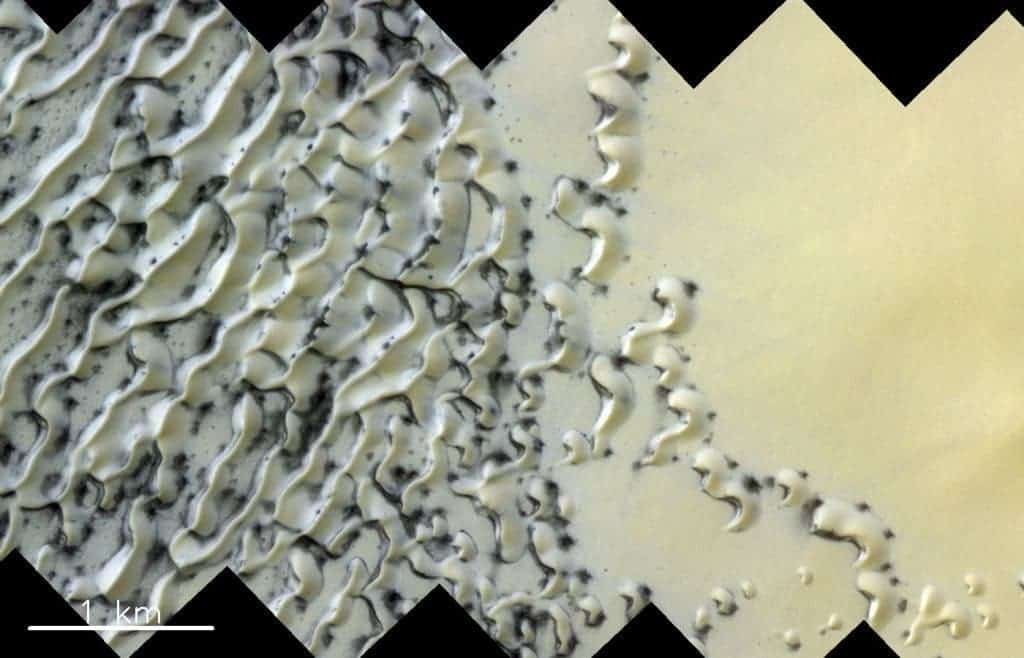
When Galileo Galilei made the first telescope observations of Mars in 1609, he was not able to detect any surface detail. Later observations by iconic astronomers such as Christiaan Huygens, Giovanni Cassini, William Herschel, and Giovanni Schiaparelli revealed white spots that looked like polar caps, seasonal variations on the Martian surface, and carved featured into the natural landscape which astronomers at the time called “canals.”
These fathers of modern astronomy could have never dreamed of the level of exquisite detail that we’ve come to know the Martian surface in. Just take a glimpse of this amazing satellite image (featured above) of a region of the red planet’s north pole, showing rich, creamy white textures.
The observation was captured by ExoMars Trace Gas Orbiter, a spacecraft jointly operated by the European Space Agency (ESA) and Russia’s Roscosmos.
Although it might look like delicious ice cream or white chocolate mousse, what we’re actually seeing is a collection of icy dunes made of carbon dioxide and sand with dark patches in between.
The spacecraft’s CaSSIS camera took the image in late May, a period when the landscape was going through seasonal changes. During winter, the Martian north pole is covered in CO2 ice. Come spring, the ice turns into vapor from below the surface. And as the ice cracks, the sublimated ice transports sand during its ascent into the atmosphere.
There multiple types of dunes in the image, too. Those on the left are ‘regular’ dunes as most people will recognize. Those on the right, however, are called barchan dunes, also known as crescent dunes — these grow large and link up with each other to form barchanoid ridges. Such formations are highly useful to scientists studying Mars since their curved tips signal which way the prevailing wind blows.
Last year, the same spacecraft captured another springtime image — this time in the southern pole. This image also shows a dune filed, but it’s a bit more interesting because it features a crater.







